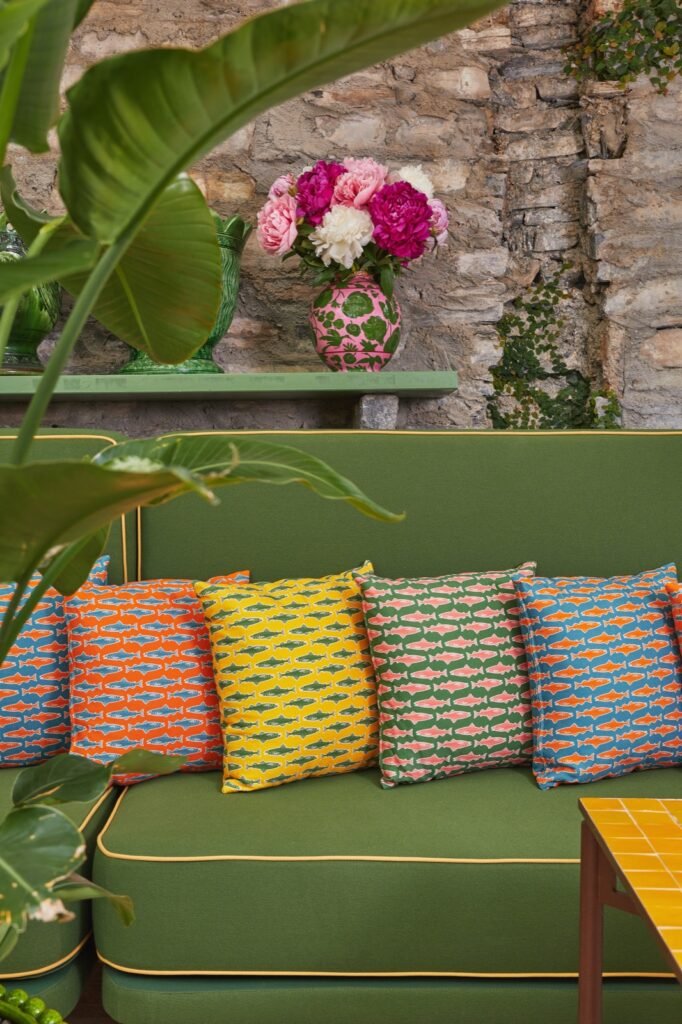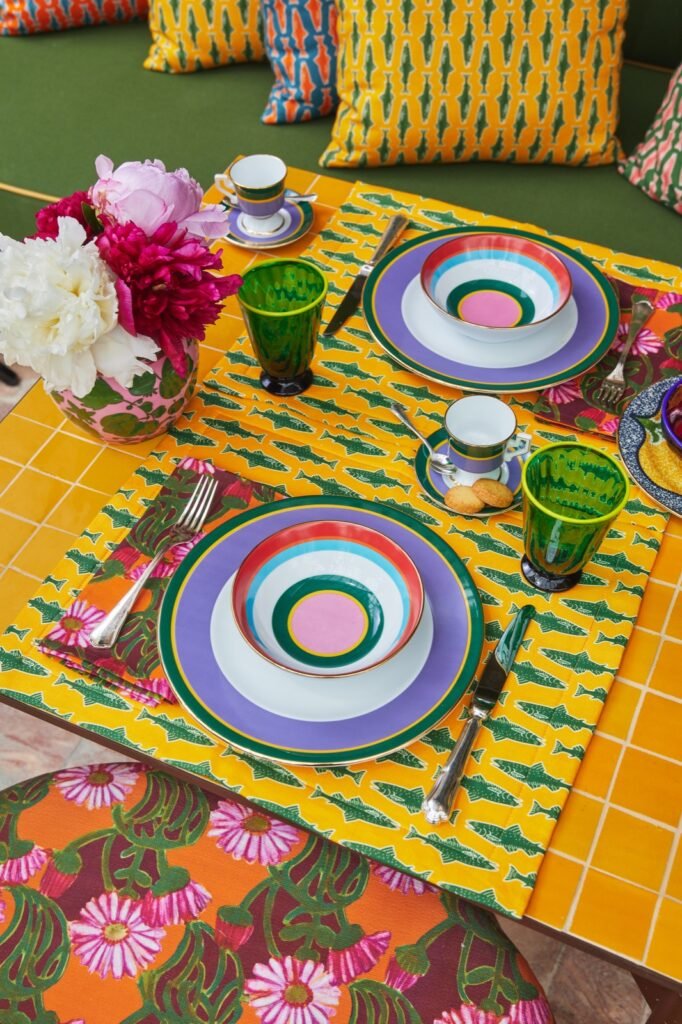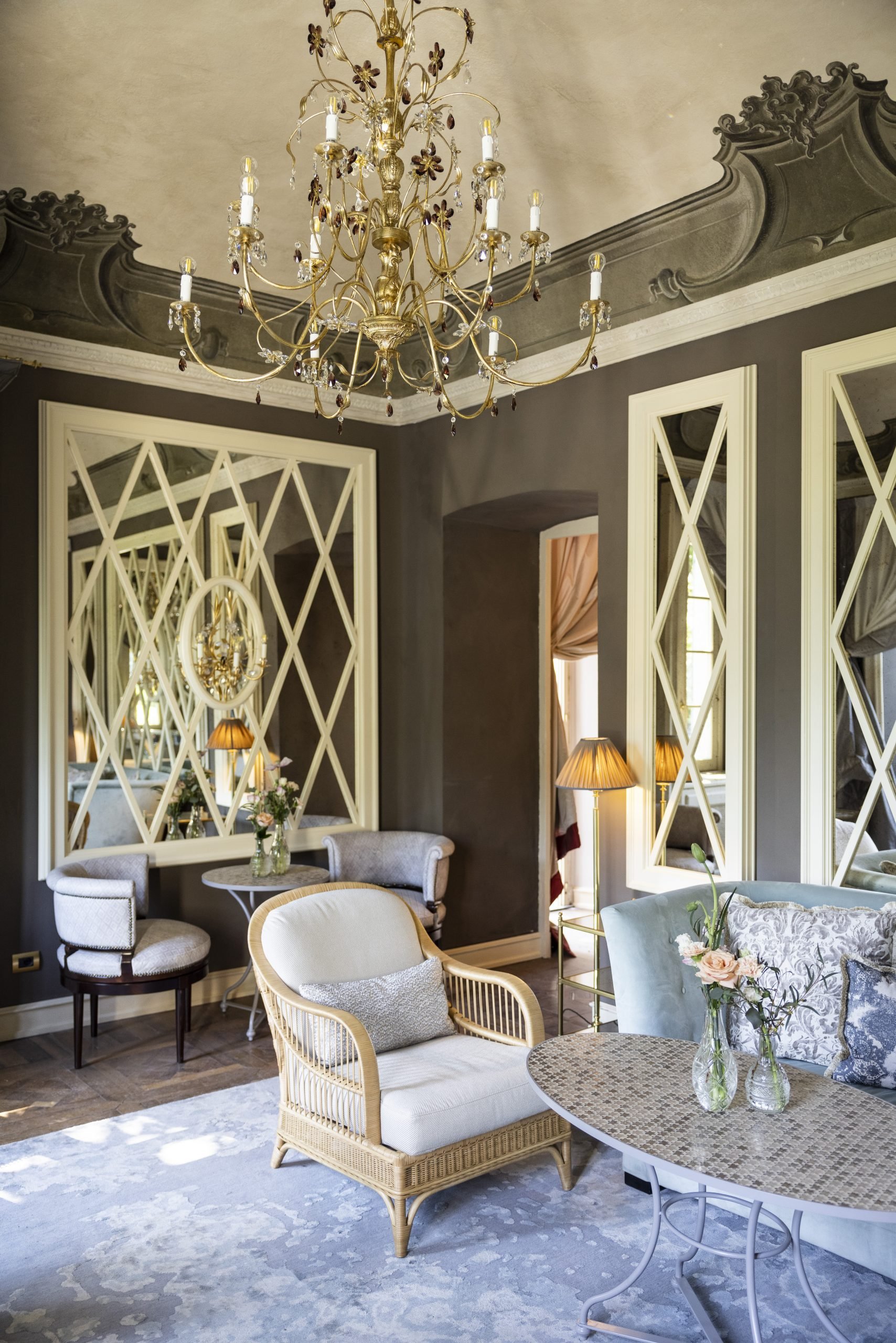Passalacqua, Lake Como
From a lovestruck Bellini to a smitten Bond.
The waterside villas of Lake Como have been a haven for travellers for hundreds of years.
Now, as a smattering of new hotels settle on the storied shoreline, guests are being invited to discover a region all over again. It seems Lake Como is having a moment once more. Like most destinations with a long history of tourism, the great lakes of northern Italy have drifted in and out of favour over the decades. With its Belle Époque maximalism and timeless romance, Como, which lies about 80 kilometres north of Milan’s Malpensa Airport, is sometimes passed over for more cutting-edge destinations, but it has been experiencing something of a renaissance over the past year.
The woman behind this revival, at least in part, is Valentina De Santis. Since 1975, her family has owned and managed the magnificent Grand Hotel Tremezzo, which was established in 1910 and was one of the first purpose-built luxury lakeside hotels. Over the past 10 years, De Santis has overseen every detail at this inimitable stay, from the vast displays of fresh roses in the lobby, whose fragrance hits you on arrival – while inspiring the iconic hotel’s Sense of Lake fragrance range – to the resplendent breakfast buffet that contains more silver cloches, Champagne buckets and chocolate fountains than you’d expect to see in a lifetime, and, of course, the unfailing service, which strikes just the right note for this grande dame of Como hotels.
Passalacqua: a private villa, reborn.
A historic private villa since 1787, the setting of Passalacqua is sublime. No heart can be immune to the suggestive magic of Lake Como, which glitters and beckons to you from below, and its romantic grand villas, which have seduced storied painters and composers, philosophers and wealthy merchants and George Clooney.
Expectations ran high at the unveiling of this 24-suite little sister for the Grand Hotel Tremezzo, which is thrice the size. It has been acquired and reimagined by the same, talented owners, the De Santis family – Como hoteliers to end all Como hoteliers. But expectations were met. Passalacqua is a practically faultless creation, coming in to land elegantly on the right side of ostentation, which breathes the ambience of a sequestered private home of exceptional beauty. Italian artisanship shines at every turn, so much so that every guest, no matter how grand, seems to wear the slightly gob-smacked air of a mortal who has wandered into an Italianate utopia.
In 2018, De Santis and her parents, Paolo and Antonella, branched out from the Grand Hotel Tremezzo and purchased a crumbling palazzo dating back to 1787. Passalacqua, which takes its name from the property’s first owner, Count Andrea Lucini-Passalacqua is a true passion project. The three-year renovation cost north of $30 million and saw a team of restorers decorate many of the 24 suites by hand, using an almost-forgotten stencilling fresco technique.
The walls of the main villa are filled with original prints from the 18th and 19th centuries and, says De Santis:
“Every piece of furniture is a cherrypicked antique by my family. You can wander around and pick seasonal flowers to create a DIY bouquet for your bedroom, like they might have done in an 18th-century villa.”
With her usual flair for the poetic, De Santis uses these fresh-cut flowers to exemplify the difference between the two offerings. Unlike the Grand Hotel Tremezzo’s formal gardens and dramatic displays. Passalacqua’s most photographed spot is the 20-metre oval-shaped outdoor swimming pool lined with custom floral parasols from the Milan-based fashion designer JJ Martin. Set back from the pool is an impossibly aesthetic greenhouse known as the Winter Garden, also Martin’s work.
In the shoulder seasons – March to mid-May and late September to November – tables in the Winter Garden are laid with colourful mismatched platters and fabulous floral prints for a lunch service of Italian classics, a riff on spaghetti al pomodoro, topped with lemon zest, is a favourite. Passalacqua is one of the few lakeside hotels that remain open during Christmas and the new year, during which it becomes a cosy hideaway where guests can play board games in the library, take a baking masterclass with the head pastry chef, or simply wander into the kitchen in search of a tasty snack.
The three hectares of terraced gardens are pecked at by free-range chickens and an “orto” keeps the kitchen stocked with tomatoes, pumpkin, zucchinis, eggplants, watermelon, strawberries and endless herbs, depending on the season. As we wander the property’s different layers, De Santis explains that each one is like a salotto. On the top level, gazebos have been erected for private lunches and dinners; further down, a clay tennis court overlooks the water.
The level of detail and devotion in the decoration and artisanship is astonishing. Reams of precious antiques, carpets and paintings are the result of years spent trawling through markets, auction houses and private homes. Hand-blown Murano chandeliers join Il Bronzetto light fittings, including a magnificent entanglement of brass oak leaves forming a candelabra in the dining room. Marble is ubiquitous, sourced from quarries from Carrara to Sicily, including the Breccia Pontifici, the stone preferred by Bernini, used for the tomb of Pope Urban VIII in St Peter’s Basilica.
Palatial, opulent, wearing centuries
of history with a touch of airy lightness.
The suite of wonders is practically a villa within the Villa. The grandest rooms are in the villa, with the piece de resistance being the double-height balustraded music room with Albertolli frescoes, now the Bellini suite, where the maestro composed. The “Casa Al Lago” is a sleek, 1970s-built house where a similar design concept has been rolled out, as with the Palazz: matching hand-painted silk walls and bronze light fittings; walls hand-stencilled in damask patterns; evocative antique etchings.
Each suite in the villa is named after a Bellini character: the Beatrice suite was named for his 1833 libretta Beatrice di Tenda is a symphony of dusky rose pinks, original stucco and ceiling carving, Como silks, Fortuny lamps, etched Barbini mirrored cabinets, and hand-painted Bordoni leather ottoman tables. Bottega Conticelli objets d’arts from leather and wood include vintage-style steamer trunks that conceal in-suite televisions and fragrant stationery items. Beltrami linens, made with the natural fibres of Norway’s white birch.
“Marbres du Roi” and white-and-rose Dover Aurora marble from the quarries of Louis XIV top the vanity, hung with etched mirrors.
Close to the lake are centuries-old magnolia and cedar trees, which may be the same ones Vincenzo Bellini, a former resident, gazed upon while composing “Norma” in 1829 and, later, “La Sonnambula”. There’s also a secret tunnel, formed within the foundations of an ancient monastery, which was part of a network of underground passageways that connected the villa to the lake in the 18th century and now contains the spa’s sauna and steam room.
You only have to pop into a piano recital at the neo-Classical Teatro Sociale Como opera house, about 10 kilometres south of Passalacqua — almost completely sold out — to understand how much music and art have seeped into the way of life here. Passalacqua’s general manager, Silvio Vettorello, points out that it was during Bellini’s stint at the villa that he pursued his relationship with his soprano muse, Giuditta Pasta. Legend has it that he’d play the piano and she’d sing back to him from the other side of the lake.
Where Via Besana, 59, 22010 Moltrasio, Como, Italy
Phone +39 031 44311
Pricing ££££










